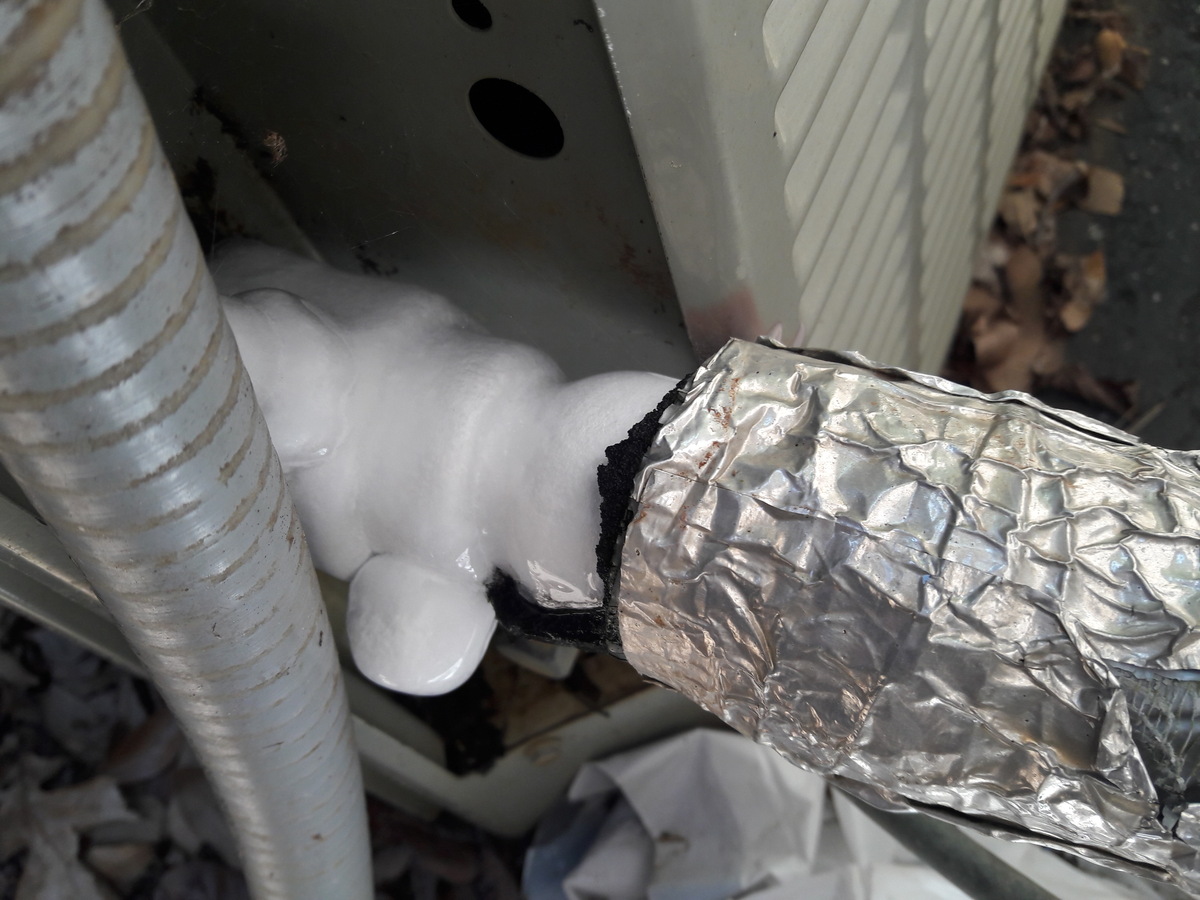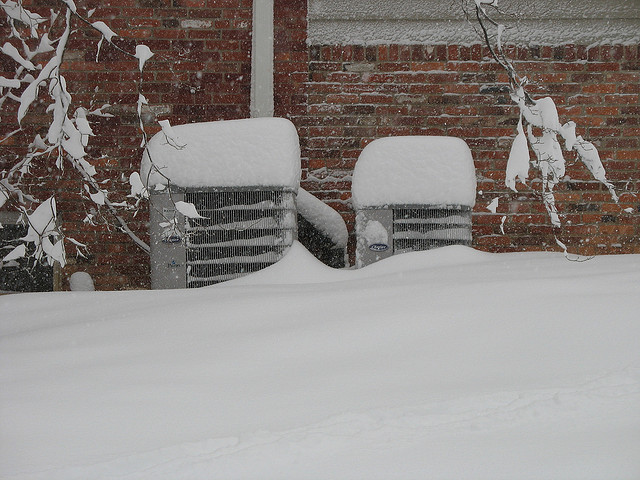Dealing with a Frozen AC Pipe: Successful Strategies
Dealing with a Frozen AC Pipe: Successful Strategies
Blog Article
The publisher is making a few great observations relating to Why Is Ice On My Outside Air Conditione in general in the content underneath.

Intro
Uncovering that your air conditioner pipeline is iced up can be worrying, specifically throughout warm summer season when you count on your ac unit one of the most. Recognizing what to do in such a circumstance is essential to avoid more damages to your air conditioning system and ensure your comfort indoors.
Understanding the Causes
Numerous factors can contribute to the freezing of an air conditioning pipeline. Comprehending these causes can aid you deal with the issue properly.
Lack of Airflow
One usual reason for an icy air conditioning pipeline is inadequate air flow. When the air movement over the evaporator coil is restricted, it can trigger the coil to go down below freezing temperature, causing ice development on the pipe.
Low Refrigerant Levels
Not enough refrigerant levels in your a/c system can additionally result in a frozen pipe. Reduced cooling agent degrees can cause the pressure in the system to go down, causing the freezing of moisture on the evaporator coil.
Cold Weather Conditions
In colder climates, freezing temperatures outside can contribute to the cold of AC pipes. If your AC unit is not correctly protected or if there are leaks in the ductwork, cold air can infiltrate the system, creating the pipeline to ice up.
Dirty Air Filters
Filthy or blocked air filters can restrict air movement in your air conditioner system, causing different issues, consisting of a frozen pipeline. It's vital to replace or cleanse your air filterings system frequently to guarantee correct air movement and avoid ice buildup.
Indicators of a Frozen A/c Pipe
Recognizing the indicators of a frozen air conditioner pipe is critical for timely activity.
Decreased Airflow
If you see a considerable decline in airflow from your vents, it can indicate a frozen pipeline.
Ice Buildup on the Pipe
Noticeable ice buildup on the refrigerant line or the evaporator coil is a clear sign of an icy AC pipe.
Odd Sounds from the Unit
Uncommon audios, such as hissing or bubbling, coming from your air conditioning system can signify that there's ice existing on the pipeline.
Immediate Actions to Take
When confronted with an icy AC pipe, it's essential to act quickly to prevent further damage to your cooling system.
Turning off the air conditioner
The primary step is to shut off your air conditioner to stop the system from running and aggravating the issue.
Checking for Blockages
Check the area around the indoor system for any type of obstructions that might be obstructing air flow, such as furniture or curtains.
Thawing the Pipe
You can use mild approaches like putting towels soaked in cozy water around the frozen pipe to aid thaw it gradually.
Preventive Measures
Taking preventive measures can aid prevent future occurrences of an icy air conditioner pipe.
Routine Maintenance Checks
Set up routine upkeep checks with a professional HVAC technician to ensure that your a/c system is running efficiently.
Changing Air Filters
Regularly change or clean your air filters to stop airflow limitations and keep optimum efficiency.
Insulating Exposed Pipes
If your AC pipes are exposed to chilly temperatures, consider insulating them to prevent cold during cold weather.
Looking For Professional Help
If DIY approaches fail to deal with the issue or if you're unsure about just how to continue, it's finest to seek assistance from a qualified HVAC professional.
When DIY Methods Fail
If your efforts to thaw the pipe or address other concerns are unsuccessful, it's time to hire a professional.
Value of Hiring a Professional HVAC Technician
A licensed HVAC technician has the experience and devices necessary to identify and repair problems with your AC system securely and effectively.
Final thought
Dealing with a frozen air conditioner pipe can be an irritating experience, but understanding just how to respond can assist lessen damages and restore comfort to your home. By recognizing the reasons, recognizing the indications, and taking timely action, you can properly deal with the problem and prevent future incidents.
What to Do If Your AC Line Is Frozen
Make Sure All Supply and Return Air Vents Are Open
If you notice problems with airflow, the first thing you should do is check your supply and return vents. Supply vents distribute clean, conditioned air throughout your home. As this air becomes stale, it’s pulled into the return vent, where it’s reconditioned before being sent back out through the supply vent.
When these vents are closed, air won’t flow in the home. Before examining your AC, check the vents in every room and ensure they’re all open.
Check for a Dirty Air Filter
Another possible cause of limited airflow is a dirty air filter. Your air conditioner’s filters catch elements you don’t want to breathe in, such as dirt and dust. Over time, filters can become clogged, ultimately blocking air from flowing in and out. The lack of airflow can then cause the entire coil to freeze and will completely restrict any air from moving through it. The AC may need to be powered off for one to two days to allow the coil to thaw after replacing the filter to allow proper functioning of the unit. This debris can also accumulate on your AC’s evaporator coil, requiring a more serious repair. In general, air filters should be cleaned regularly (about every two weeks).
Assess Your Outdoor Unit
In addition to checking your AC, assessing the outdoor unit is a good idea. Also known as the condensing unit, it works with your interior unit to release heat outside. An issue with the outdoor unit can result in rising internal temperatures.
Overgrown Shrubs or Clogged Leaves
From leaves and twigs to shrubs and debris, there’s no shortage of outdoor elements that can accumulate around your condensing unit. When these elements get lodged inside the unit, they can block airflow. Fortunately, removing the blockage can solve the problem.
Sounds of a Broken Fan
Shrubs and leaves aren’t the only things that can impede your outdoor unit’s airflow. If the fan is broken, the unit won’t be able to properly get rid of heat — which means the internal temperature won’t go down. First, make sure the fan is spinning. If it is, check for the following sounds of a broken fan:
Buzzing Rattling Screeching Hissing Clicking Preventative Measures
Nobody wants to deal with a frozen AC line. In addition to causing problems with your air conditioner, they require professional repairs. On the bright side, there are preventative measures you can take to help ensure this issue doesn’t arise in the first place.
https://www.coopergreenteam.com/blog/what-to-do-if-ac-line-frozen

We hope you enjoyed reading our post on Why Is Ice On My Outside Air Conditione. Thanks a ton for spending some time to read our piece of content. Sharing is good. Helping people is fun. Many thanks for taking the time to read it.
Call Today Report this page